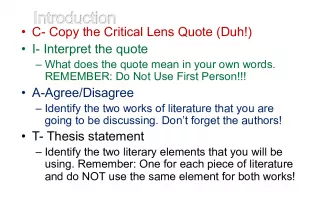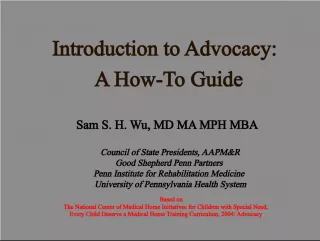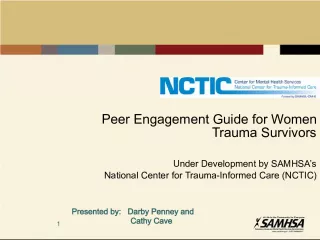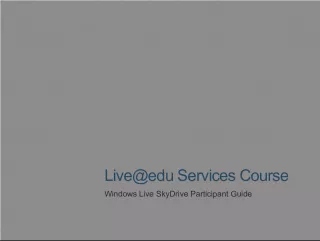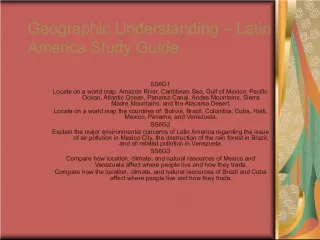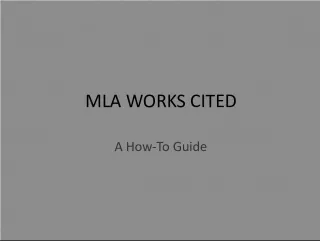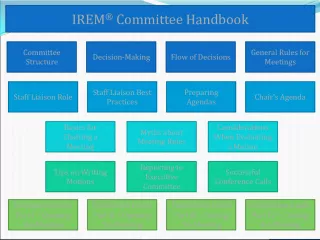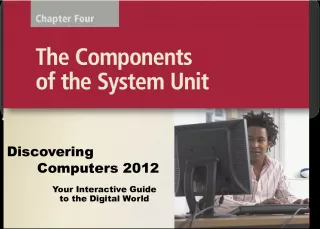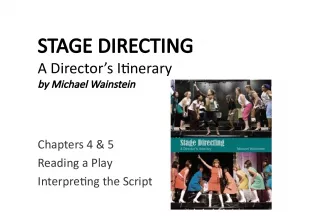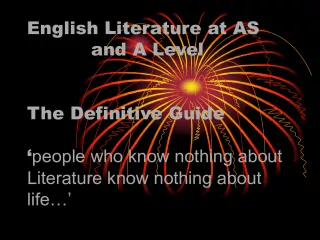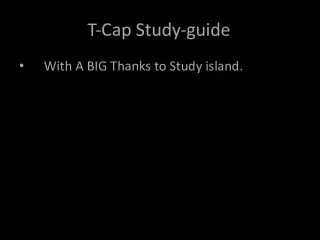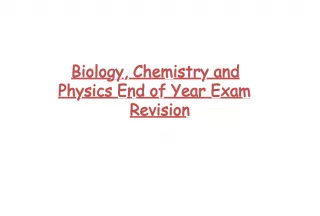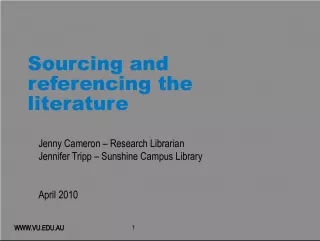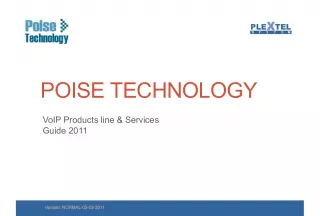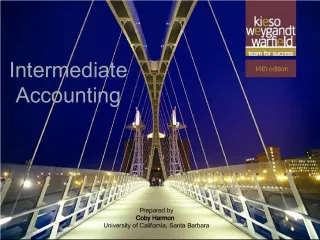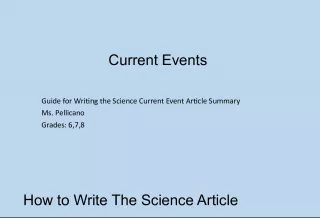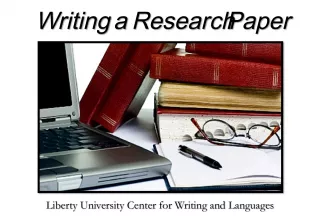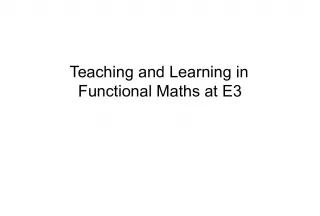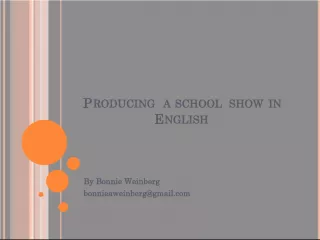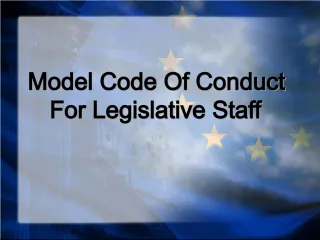Guide to Huckleberry Finn
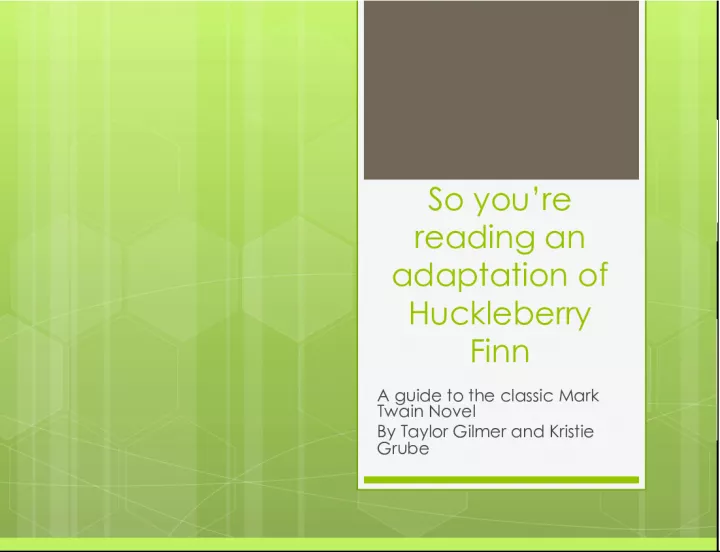

Learn about the context, major characters, and themes of Mark Twain's classic novel about a young boy's journey to freedom.
- Uploaded on | 0 Views
-
 nasirmayert
nasirmayert
About Guide to Huckleberry Finn
PowerPoint presentation about 'Guide to Huckleberry Finn'. This presentation describes the topic on Learn about the context, major characters, and themes of Mark Twain's classic novel about a young boy's journey to freedom.. The key topics included in this slideshow are Mark Twain, Huckleberry Finn, Mississippi River, slavery, Tom Sawyer,. Download this presentation absolutely free.
Presentation Transcript
1. So youre reading an adaptation of Huckleberry Finn A guide to the classic Mark Twain Novel By Taylor Gilmer and Kristie Grube
2. Huckleberry Finn Context Written by Mark Twain, born as Samuel Langhorne Clemens. First published in 1884. This novel is actually a continuation of Tom Sawyer , where readers first meet Huck Finn. The novel is set pre-Civil War, which is highlighted through Twains diction.
3. Huckleberry Finn Major Characters Huck Finn- Our Protagonist, a young adolescent on the cup of teenage years. In the novels predecessor, Huck finds a large sum of money with his best friend, Tom Sawyer. After the adventures of Tom Sawyer, he escapes the abuse of his drunken father, Pap and is living with Widow Douglas and Miss Watson. Huck is our narrator and the novel is written in his voice, which shows overtones of a lacking formal education. Jim - Miss Watsons slave. He serves as both a companion and surrogate father to Huck during their journey down the Mississippi River (and to freedom). Tom Sawyer- Hucks best friend. He is a foil to Huck, as he was not raised in Poverty and embodies much of a regressive Southern perspective. He also, tricks Huck and Jim at the end of the novel by allowing Jim to believe he is still a slave. Pap- Hucks drunken father from which whom Huck escapes. Since he is Hucks father he believes he should be entitled to Hucks fortune. Widow Douglas- One of Hucks two guardians, the calmer of the two. She is more understanding towards Huck and he doesnt want to disappoint her. Miss Watson- More ethical and religious guardian. She is more strict with Huck and wants him to learn proper manners.
4. So what happens? Huck, by order of a new judge in town, is placed back into the custody of his abusive father and fakes his own death to escape the abuse. His friend and former guardians slave, Jim, has run away and finds Huck hiding out. They decide to run away to escape the horrible futures they face. Jim to be sold and Huck to be killed. The two begin a journey down the Mississippi River where they encounter many tests of moral character. Which include the Duke and the Dauphin, who are two robbers who scam many towns along their journey. Throughout the novel both characters frequently save one another from life threatening situations. At one point along their journey, Hucks father is found dead by Jim, but this is not revealed until the end of the novel. At the conclusion of the novel it is made apparent that both Jim and Huck have been free for sometime, because Miss Watson has been dead for two months and freed Jim in her will.
5. Major Themes Discriminating of races Growing into manhood Defying societal norms Concealing Identity Punishing the Wicked
6. Critical Responses Shylock, Huckleberry, and Jim: Do They Have a Place in Today's High Schools? by James Gellert discusses how racism impacts students abilities to process Huckleberry Finn and other classic literature. Much of the critical assessment of Huckleberry Finn deals with censorship, it is a frequently banned book. Gellert questions the necessity of censoring classic literature based solely on its language. Kay Puttocks Many Responses to the Many Voices of Huckleberry Finn discusses the significance of a childs perspective using offensive language and how the novel impacts the literary community. Puttock shares that many teachers have a high level of apprehension in teaching the text to African-American Students.
7. Additional material adapted from this source There are both literal and abstract types of Huckleberry Finn from a multitude of media. Huckleberry Finn - A Musical Adaptation, released in 1974 Finn: A Novel by Jon Clinch published in 2007 The Further Adventures of Huckleberry Finn by Greg Matthews published in 1983. My Jim by Nancy Rawles published in 2005. Disney Version: http://www.youtube.com/watch?v=cS9-HeIUa- M
8. Important Things to Know about You Dont Know Me At the beginning of the text, the author shares with us that this novel is to serve as an adaptation of a Huckleberry Finn sequel based on Mark Twains notes. Major themes in the novel include educating of others and journeying to find oneself. There are frequent references to the source text throughout the novel. The more you know about the text, the more rewarding the novel is. It is used as an educational tool in the text. Set in present day, Meehl uses religion as the force of discrimination in the novel.
9. The Adaptor-Brian Meehl While Meehl as had many exciting profession including serving as the first Elmo, his first love remains writing. He has served as a writer for popular Childrens television shows such as The Magic School Bus and Between the Lions Brian takes the time to research each of his novels as seen in this photo
10. So what are people saying about You Dont know About Me? Clearly, the book stands on its own merits as an exploration of one boys quest to understand the seemingly irreconcilable contradictions of his faith, his family, and his friendships, but it will also make young people better readers of the Adventures of Huckleberry Finn by helping them see the ironies and contradictions Twain explored in that book in comparison with present-day contexts Karen Coats, The Bulletin of the Center for Childrens Books Throw in a trip to Burning Man, a pair of con artists, and the legendary sequel to Huckleberry Finn, and you have a recipe for a story both strange and wonderful. Publishers Weekly
